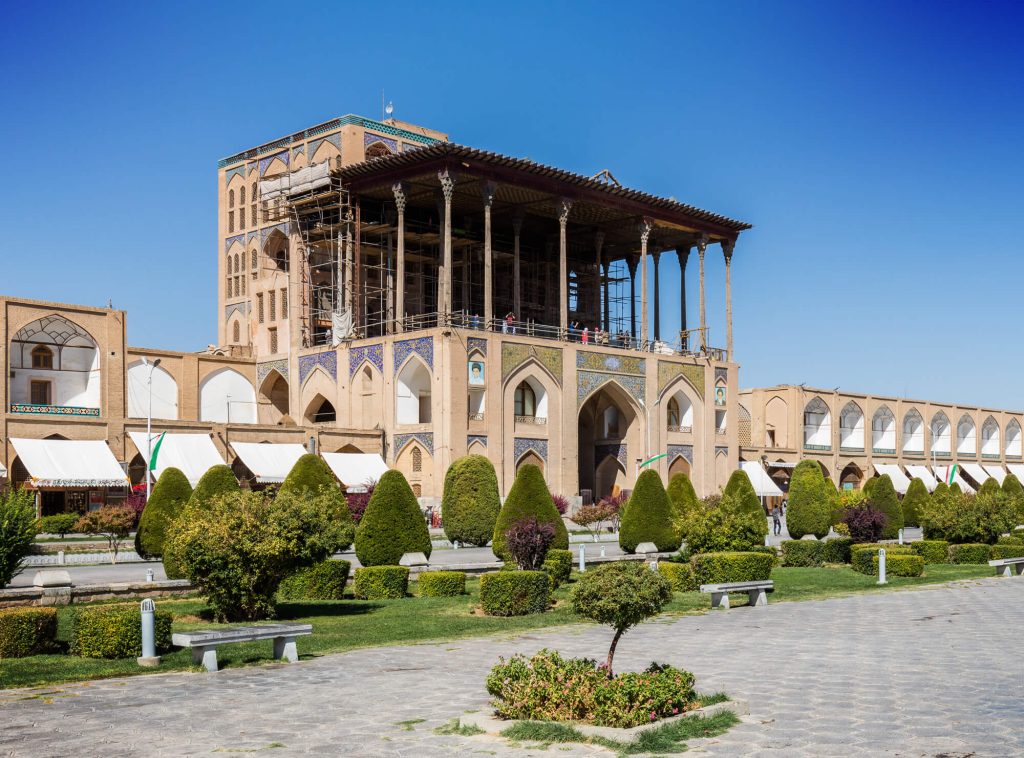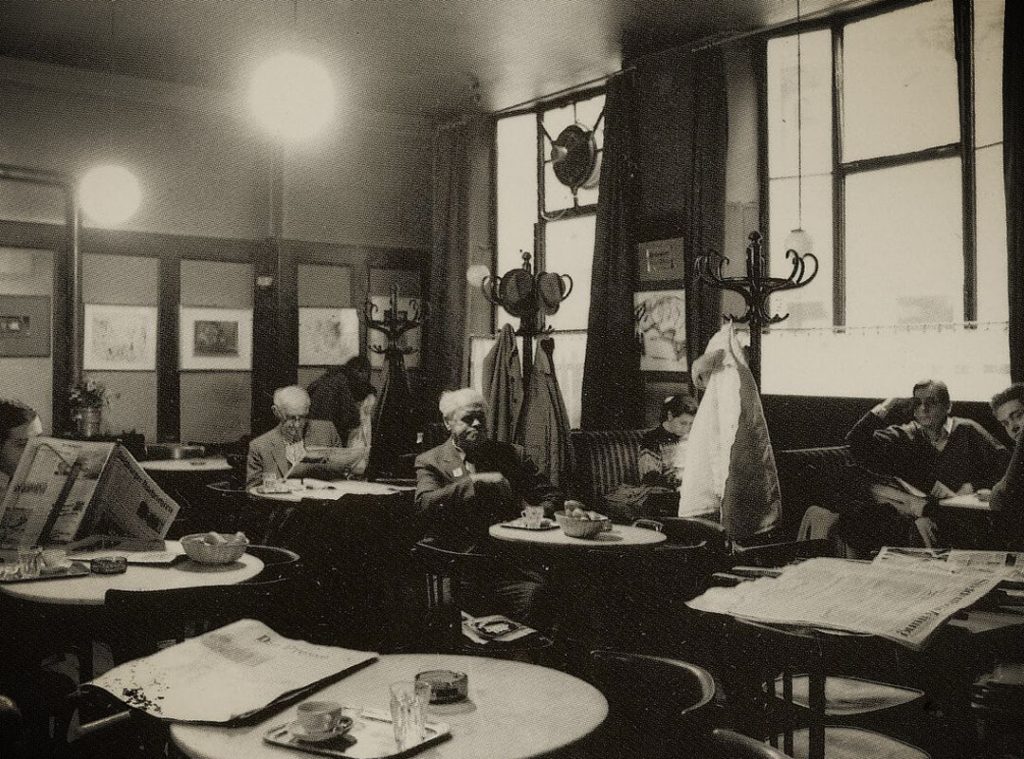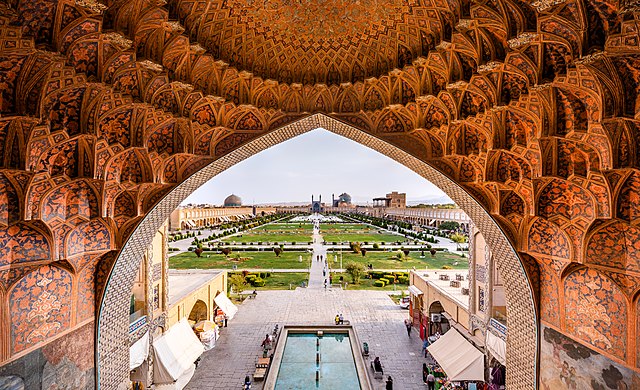Did you know that the Cyrus’s tomb in Iran is the only building in Pasargad that described in Greek sources? This building is in1 km southwest of “Pasargad Palaces” in Fars and it can see from all sides in the Marghab Plain. Today, in Hey Persia blog, we want to talk to you about the tomb of Cyrus the Great, the secrets of the tomb, the interior architecture, etc. If you are also in getting more information about this, stay with us in the rest of the article.
Who was Cyrus?
Cyrus the Great, known as Cyrus II or Cyrus the Great, is the founder and first king of the Achaemenid dynasty. This righteous king, who is as Nik in the world, ruled over vast areas of Iran and Asia for 30 years. It is that the tomb of Cyrus was during his lifetime and by his command. In 1971, the United Nations translated the Cyrus Cylinder into all the official languages of the world and placed a copy of it in the United Nations and in New York City.

Where is the Cyrus’s tomb in Iran
The tomb of Cyrus is a simple and unique building located in the southern part of “Bostan Shahi Pasargad” in Marvdasht. The distance from Cyrus’ tomb to Shiraz is about 137 km and it takes 1:41 minutes to get there. If you enter the Marghab Plain from the southwestern side and Balaghi Gorge, you will see Cyrus’ tomb from all sides. This building registered as a UNESCO World Heritage Site in 2004 as a subset of Pasargad. The 2,500-year-old tomb of Cyrus made of yellowish white limestones that were from Sivand Mountain.
Cyrus’s tomb in Iran consists of two distinct parts
A six-step stone platform, A room with a gable roof above the sixth staircase citadel. The overall view of Cyrus’ tomb is very similar to “Cheghazanbil Temple”.
in the construction of this sacred building. As in “Takht Jamshid”, no mortar used, but the stones are by metal fasteners and they are tails. Unfortunately, all the fasteners have removed and ugly pits have created on the stones. The 6 stone steps of this tomb stacked in the form of floors. Each floor is smaller than the one below it, and the height of the floors is not the same. The first floor is the tallest. The tomb of Cyrus the Great is 11 meters high and its total area is to be around 160 meters.

Architecture of the tomb of Cyrus
As we mentioned, the 11-meter tomb of Cyrus the Great consists of two separate parts of a six-step stone platform and a room with a gable roof on top of the sixth step. As we mentioned, this building has a room with dimensions of 3.1772.112.11 meters and the thickness of its walls is 1.5 meters and it consists of 4 rows of carved stones. The floor of the room is also made of two very thick stone slabs.
The interior of the room is very simple and has no patterns. There is only one flower on its forehead, its petals have the shape of the sun and it has a resemblance to Cyrus and its spiritual position. The roof of the mausoleum is flat and simple from the inside, but it is gabled from the outside and has a slope on both sides, similar to the number 8.
Restoring the tomb of Cyrus
The tomb of Cyrus restored twice, once in 1350 and the second time between 1380 and 1387. As we mentioned, the tomb of Cyrus the Great is of white marble that brought from Mount Sivand, 30 kilometers from the region. A very interesting point that we should mention in this regard is how did they connect the large and cut stones without mortar? How are these pieces of stone still intact after 25 centuries? As we mentioned, there is no mortar between the stones and the stones are to each other through metal fasteners.
There was a fig tree growing on top of the tomb, and after cutting it, they noticed a hole inside the tomb that led to the inside of the building and the gable of the roof. With the investigations done by archaeologists, they noticed a hole in the roof. At first, they thought that this empty space was the burial place of Cyrus, but then this theory was rejected. It is still not clear in which part of the tomb Cyrus is buried
The history of the tomb of Cyrus the Great
As we mentioned, the tomb of Cyrus probably built by himself before his death. This tomb was a holy place during the whole period of Achaemenid rule. When Alexander the Great attacked Iran, one of his soldiers broke the door of the tomb and looted the contents and damaged the body. Iskandar was very sad to hear this news and ordered to restore the tomb.
There is no information available about the state of the tomb during the Parthian and Sassanian rule. But with the arrival of Islam in this land, its history gradually forgotten and people considered the construction of great buildings beyond human power and attributed it to Hazrat Suleiman who had transcendental power and was in control of humans and jinn. For this reason, the tomb of Cyrus was also as one of the monuments of Hazrat Suleiman and it was “Mashad of Suleiman’s mother”.
Cyrus’s tomb in Iran
In this article, we tried to talk to you about the personality of Cyrus, the architecture and the interior of Cyrus’ tomb. If you have traveled to Pasargad and have more information about it, you can write them in the comments and suggestions section and share them with us. Thank you in advance for your cooperation.
Hey Persia tourism magazine has launched with the aim of getting to know more Iranians who are enthusiastic and interested in this land and water. If you also want to know more about our vast country, you can register on Hey Persia website and learn about the most important events and tourist places of our country.





